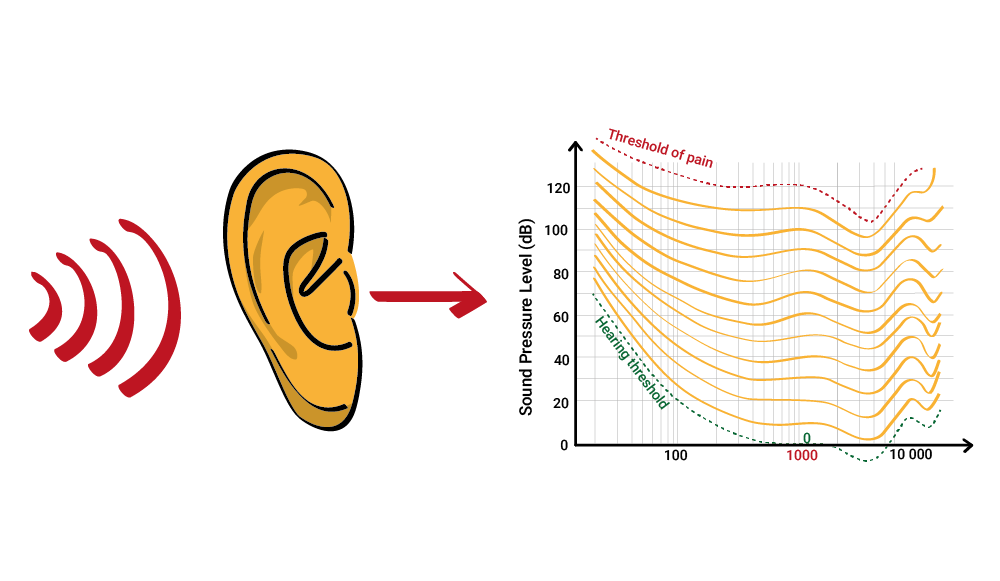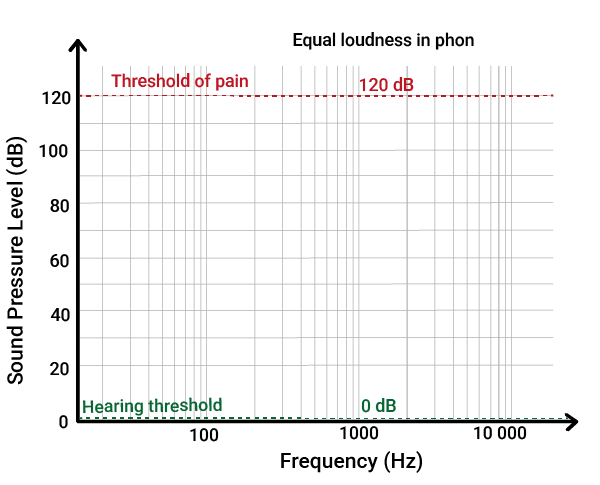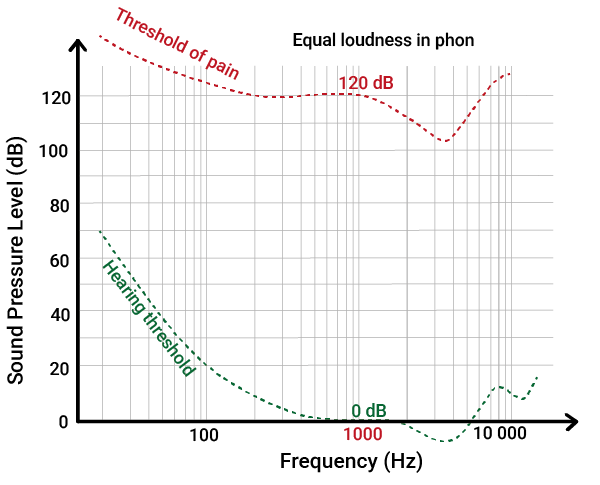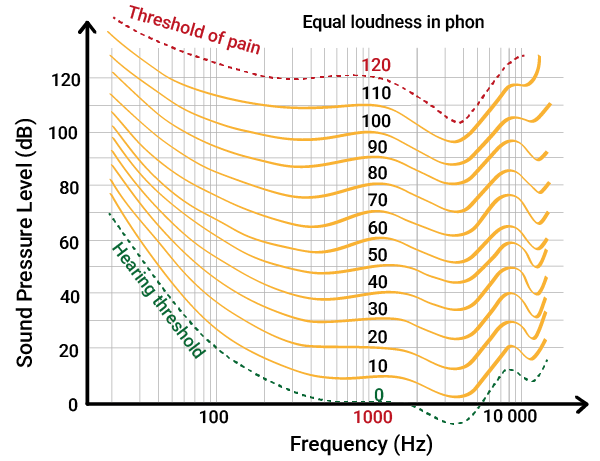
When designing spaces for music, speech, or everyday sound, it is important to understand how the human ear works.
The way we hear and interpret sound is not only about volume — it is also about how our ears respond to different frequencies.
This article explains the ear’s sensitivity to sound and the subjective perception of loudness, including how these factors influence acoustic design, sound engineering, and auditory experiences.
Enjoy the read!

Do you want to be notified when new posts are published?
Why don’t you subscribe to Atelier Crescendo’s newsletter by clicking here?
The ear’s sensitivity to sound
The human ear is an incredibly sensitive organ. It can detect a wide range of sound pressures, from the faintest whisper to levels that cause physical discomfort.
At the quietest end of the spectrum, the ear can detect sounds at 0 dB, which equals a pressure of 2×10⁻⁵ pascals.
This pressure is extremely low (about 2×10⁻¹⁰ bar) and is known as the threshold of hearing. (2×10⁻¹⁰ bar).

At the other extreme, the threshold of pain is around 120 dB, or 20 pascals (10⁻⁴ bar).

Sounds above this level can cause immediate discomfort and may damage the ear’s delicate structures with prolonged exposure.
This means the ear can respond to pressure variations over a range greater than one million to one, making it one of the most sensitive sensors in the human body.
What Is Loudness?
Loudness is how we perceive the intensity of sound.
While sound intensity can be measured objectively using pressure, loudness depends on how our brain interprets what the ear hears.
It is a subjective experience and does not increase in a straight line (called linearly) with changes in sound pressure.
One key factor affecting loudness perception is frequency (if you want to better understand the concept of frequencies, read this article).
People do not hear all frequencies at the same apparent volume, even when the physical intensity remains constant. So the hearing and pain thresholds look a like more like this:

Equal Loudness Contours: The Fletcher-Munson Curves
To illustrate how loudness perception changes with frequency, scientists developed the Equal Loudness Curves (also referred to as Fletcher-Munson curves) .

Note
Did you notice that lower frequencies generally need higher levels to sound equally loud as mid and high frequencies?
This is because our ears are more sensitive to mid & high frequencies (i.e. 1000 Hz and above).
If you want to know and understand why, read this article.
Measuring Loudness: The Phon
To quantify loudness in a way that reflects human hearing, researchers use the phon scale.
This unit compares sounds of any frequency to a 1,000 Hz tone pure tone, which serves as a reference.
A sound that seems as loud as a 40 dB tone at 1000 Hz is said to have a loudness of 40 phons.
This method allows sound designers and engineers to consider not just how loud a sound is in physical terms, but how loud it feels to the human ear.

